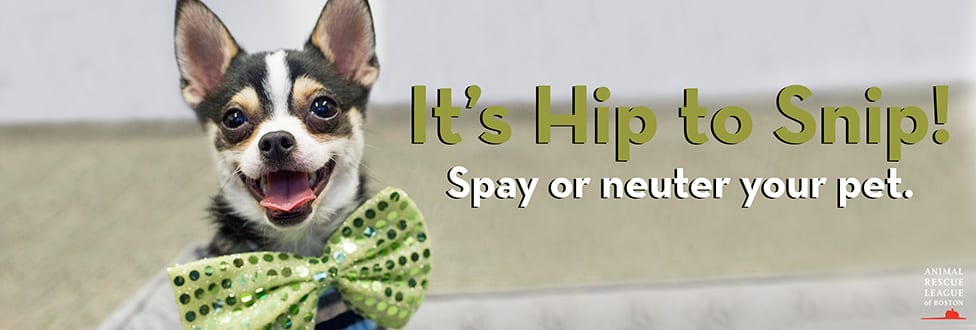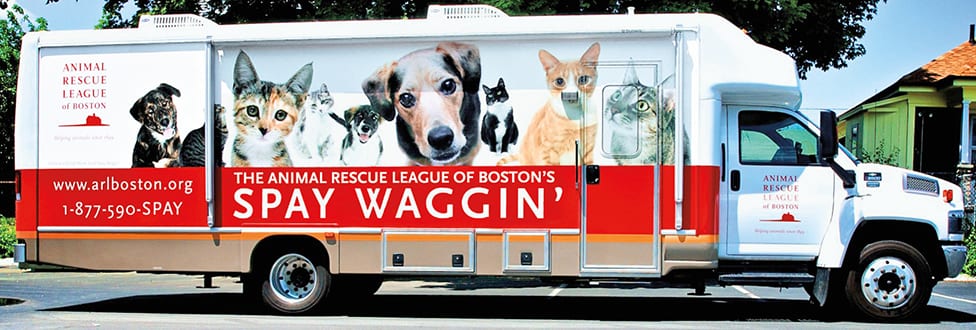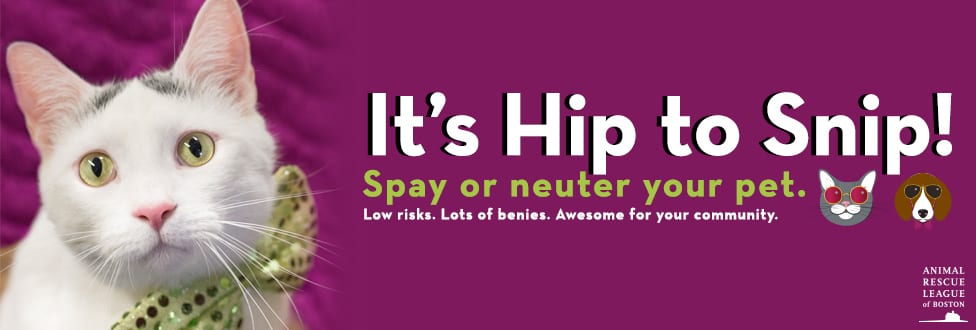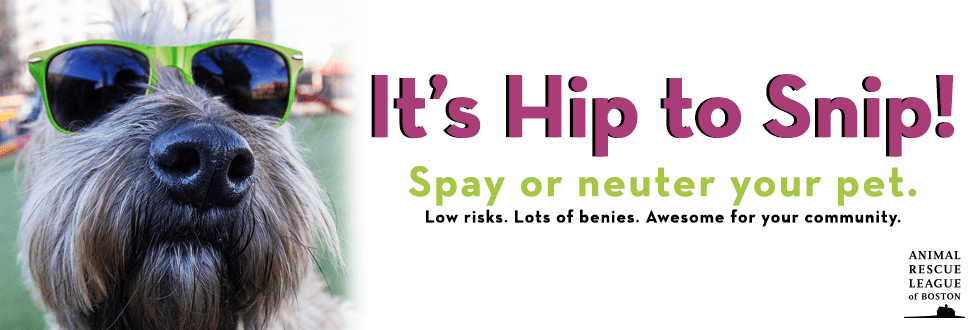ARL’s Dr. Schettino answers FAQs about spay/neuter
ARL’s Dr. Schettino answers FAQs about spay/neuter
Let’s face it: there’s nothing cool about pet overpopulation.

Dr. Edward Schettino with Moose, an ARL alum from the Boston shelter.
According to Dr. Edward Schettino, ARL’s vice president of animal welfare, a large portion of the animals coming to ARL shelters every year are a result of unplanned or abandoned litters of puppies and kittens. “If we can increase spay and neuter rates then we can help prevent pet overpopulation in a very humane way.”
Despite all the health benefits of spaying and neutering pets, approximately one third of pet owners still have not brought their pet in to have the procedure.
Dr. Schettino believes that lack of affordable options and lingering myths and misconceptions about the low-risk surgery are two major barriers to increasing spay and neuter rates. In fact, the ARL frequently addresses these concerns with clients at our Boston Veterinary Care clinic and Spay Waggin’.
ARL Blog sat down with Dr. Schettino to find out the most FAQs about spay and neuter. Here’s what he had to say…
ARL Blog: What do you say to a pet owner who’s concerned that spay or neuter surgery is painful?
Dr. Schettino (DS): Pain is associated with every surgery. At the ARL, we use pain medication before, during, and after surgery to make the procedure as pain-free as possible. The majority of dogs and cats are acting 100% normal by the next morning. In fact, the challenging part to the surgery is trying to keep the dog or cat rested when they feel so good.
ARL Blog: Is spay or neuter surgery expensive? What are the local low-cost options/clinics in the area?
DS: Spay/neuter surgeries vary in price depending on location and provider – here’s a link with some great resources – massanimalcoalition.com/resources/spay-neuter. Our Spay Waggin’ also provides affordable spay and neuter services to animals in need on the South Shore and Cape Cod. You can also check with your local veterinarian.
ARL Blog: At what age should dogs/cats be spayed/neutered?
DS: Many veterinarians now spay and neuter dogs and cats as young as eight weeks of age. You should check with your veterinarian about the appropriate time for these procedures. And remember, it’s never too late to spay or neuter your pet!
ARL Blog: Should pet owners be concerned that their pet’s behaviors will change after the surgery? Will a male dog, for example, be less of a protector?
DS: Your pet’s behavior will not change. A dog’s personality is formed more by genetics and environment than by sex hormones. It is a dog’s natural instinct to protect the home and family.
ARL Blog: What can people to do help end animal overpopulation?
DS: Spay and neuter your pet! Always talk to family and friends and explain to them the benefits of spay/neuter–tell them it’s hip to snip! Help them understand that this will benefit their pet as well as help prevent animal overpopulation. Additionally, people can donate to their favorite animal welfare charity to help support spay/neuter efforts.
For more spay and neuter resources, visit arlboston.org/spay-neuter.








